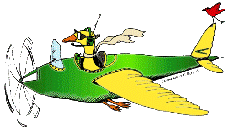Bird Strike Committee Proceedings
Date of this Version
October 2002
Document Type
Article
Abstract
Identification of fragmentary evidence such as hairs, bones, and claws that have been recovered from United States Air Force (USAF) aircraft has been undertaken by the Biological Survey Unit (USGS) for the last 5 years. The results of these investigations may be useful in preventing future damaging batstrikes. Examination of batstrikes may also provide valuable information to the scientific research community about patterns in bat migration, flight altitudes, and times of flight. Positive identifications are made by comparing unknown samples with the collection of museum specimens housed in the Smithsonian Institution’s National Museum of Natural History. Macroscopic characters such as color, texture, and size help narrow the possibilities, while microscopic features such as patterns seen in scales and medulla of the hair can be used to distinguish major groups of bats. All but eight of the 70 reported wildlife strikes during this reporting period were identified to species level. The Brazilian free-tailed bat (Tadarida brasiliensis) was struck 23 times, while the red bat (Lasiurus borealis), was identified from 15 strikes. The hoary bat (Lasiurus cinereus) was only identified in 10 strikes although this large species of bat caused the most damage to USAF aircraft. Damage reported from these strikes by the USAF totaled over $50,000. One strike alone caused over $21,000 in damage. An examination of damage caused by different species indicates that Brazilian free-tailed bats caused approximately $12,000 while the second most commonly hit bat, the red bat, caused no damage, even though several strike reports documented multiple impacts with these bats. These results indicate that body mass plays a large role in damages incurred by collisions with these bats.


